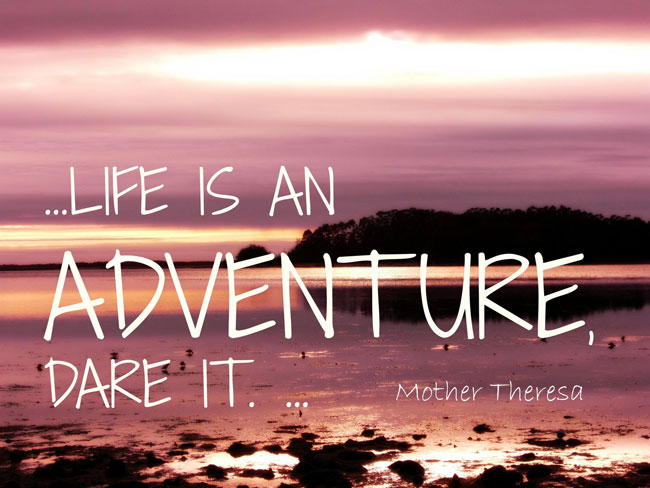From long winter weekends to spectacular spring breaks – or just making up for lost time – this is YOUR year, and we want to help you make it even better!
Traveling represents something different to each person. For some, it is a moment of introspection and self-knowledge, others see it as an opportunity to relax away from routine, and some want to enrich their way of seeing the world.
Before the pandemic, you just had to worry about remembering your passport in order to make it back to the United States. Now, with so many new travel regulations restricting re-entry into the country, travelers must be knowledgeable that they’re doing everything right if they do not want to get stranded abroad.
THE RIGHT TYPE OF COVID-19 TEST
Currently, the CDC requires all travelers entering the U.S. to have a negative COVID test within 24 hours of arrival. The U.S. is very specific about the type of COVID tests that will be accepted for reentry. Proof of negative tests will only be accepted if the test is a viral test that is either an antigen test or a nucleic acid amplification test (NAAT).
If you are packing a SELF-TEST to take while traveling, the test must meet the following requirements, according to the CDC:
- The test must be a SARS-CoV-2 viral test (nucleic acid amplification test [NAAT] or antigen test) with Emergency Use Authorization (EUA) from the U.S. Food and Drug Administration (FDA).
- The testing procedure must include a telehealth service affiliated with the manufacturer of the test that provides real-time supervision remotely through an audio and video connection.
- The telehealth provider must confirm your identity, observe the sample collection and testing procedures, confirm the test result, and issue a report that meets the requirements of CDC’s Order.
All test results used for reentry must include: the type of test, name of entity issuing the result, the date of the test, test taker’s identifying information (full name plus date of birth or passport number), and the test result. Results can be shown either on paper or electronically.
FORGETTING TO DECLARE FOOD
You might have forgotten about that banana you bought at your departure airport or the souvenir candy you’re bringing back from abroad―but failing to declare any food that you’re bringing into the U.S. can be a big mistake. You can face fines of up to $10,000. You shouldn’t be afraid to declare food at the border, as most packaged food products (like candy, breads, crackers, etc.) can be brought in without issue, and won’t even need to be inspected. You’ll only face additional questioning for products like fruits, meats, eggs, etc.
PROOF OF VACCINATION
This has become part of our ‘new normal’. With many restaurants and other indoor establishments requiring proof of vaccination, it’s a great idea to save a photo or electronic copy of your vaccine card to your phone so you always have it with you when you need it.
Acceptable proof of vaccination at the U.S. border includes:
- Vaccination certificates or digital passes with QR codes (such as the European Union Digital COVID certificate)
- A printed version of your vaccination record or CDC vaccination card
- A digital photo or electronic copy of your vaccination record/COVID card
GLOBAL ENTRY / KNOWN TRAVELER MEMBERSHIP
Now that international travelers are finally allowed back into the U.S., the country is experiencing a surge of visitors, causing longer entry lines at land borders and international airports. After a long flight home, the last thing you’ll want to do is wait in a customs line for hours. Instead, spend the $100 fee for a five-year Global Entry membership, which will allow you to speed through reentry to the U.S. Use it once and you’ll agree that it’s completely worth the cost.
WHEN TO ARRIVE AT THE AIRPORT
When you’re still in vacation mode, planning to arrive at the airport 3+ hours before your flight home can feel like a huge buzzkill―but cutting it too close can be especially risky these days. Airlines now have a CHECKLIST to accomplish before they let travelers board a flight to the U.S., including vaccine cards and COVID tests, which can add hours to check-in lines. Don’t expect to make your flight even if you show up before the check-in window closes―be sure to leave extra time in case of long lines.
HO-OKIPA & HOSPITALITY IN HAWAII
The Value of Hospitality and Giving
Ho‘okipa is the Native Hawaiian value of hospitality and giving. Native Hawaiians have always believed in selflessly extending themselves to others, whether they had close ties with them or not. Hospitality in a traditional Hawaiian context goes beyond just an act of politeness — it was a custom to extend hospitality to all visitors. Traditionally, when strangers or “malihini” were visiting Hawaii and or going into the home of a kamaʻaina, or local resident, they were always heahea (invited or called) to come inside to eat and rest.
There were often many elements of ho‘okipa or hospitality that were valued by native Hawaiians. Heahea, meaʻai, kuleana, leʻaleʻa and makana. Heahea was defined as the “call of welcome”, whenever a local would see a visitor approaching, they always called out with open arms to make the visitor feel more comfortable. Meaʻai is food in Hawaiian, not only were approaching visitors asked in, but they were always invited to eat.
Kuleana was known as a person’s responsibilities in the ho‘okipa process — this is where the visitor explains their reason for visiting. This was proper etiquette. Leʻaleʻa refers to the fun, joy, and amusement of ho‘okipa in which locals would partake in pleasant conversation with their guests. Finally, makana is known as gift-giving which were defined as tokens of affection. The main idea of gift-giving was that by giving generously, you will receive the same generosity by others. It is known as a gesture of respect.
Now days, the value of ho‘okipa still lives on in many Native Hawaiian households. If you are a visitor of one’s home, you will always be welcomed with open arms…and most likely, a plate of food to eat! As a visitor, it’s always important to practice being respectful and grateful for these gestures and to treat locals with the same respect. So, he mai e komo mai ʻoukou e komo mai i loko o kauhlale e hele mai e ʻai – All of you, come in and eat!
 INTENTIONAL LIVING
INTENTIONAL LIVING
There are always signs that indicate a new path is needed. Being too busy can keep our calendars booked while our eyes and mind remain blocked to what’s in plain sight.
Are you ready for a Lifestyle Pivot? Are you ready to discover your Personal Paradise?
“If your soul isn’t prospering, every other form of prosperity becomes meaningless.”
~ Kingsley Opuwari Manuel
Remember, there is always something to celebrate ~ we remain grateful to have served clients globally for 25 years!
Wishing you peace, health, happiness & love ~
Denise, Ashley & Annika
FUN FACTS ABOUT TRAVEL
1. Travel Makes You Smarter
As you take in the sights, smells, and sensations of a new destination, you’re doing more than making memories. Travel experiences are known to prompt your brain to think differently and more creatively too!
2. Travel Can Strengthen Your Heart
When you carry extra tension around, it negatively affects more than your mental health.
That stress can also take its toll on your heart, making you more prone to cardiovascular incidents. In fact, researchers found that men who skip an annual vacation have a 30% greater chance of suffering a heart attack.
The good news? Vacations can help lower that risk! One study found that after only a day or two away, nearly 90% of people reported lower stress levels.
3. Tourism Keeps the Economy Churning
Did you know that one in 9 American jobs depend on tourism? In the U.K., the travel industry alone offers nearly four million jobs.
The next time you book a trip, keep this fun travel trivia in mind and know you’re contributing to your local economy!
4. Paid Vacations Vary By Country
Besides the U.S., every developed country in the world extends at least one legally required paid vacation day or holiday to its employees.
The most generous country? Austria, which has a legal minimum of 22 paid vacation days per year, on top of 13 paid holidays!
5. Couples Who Travel Together
Studies show that couples who take the time to travel together report heightened feelings of intimacy.
While you may bemoan your significant other for failing to ask for directions, there’s no denying that going on an adventure together can reignite that spark!
Homemade Strawberry Lemonade
8 large strawberries, halved
2 tbsp. white sugar
7 cups water, divided
1 cup white sugar
2 cups freshly squeezed lemon juice
Place strawberries in a blender; top with 2 tablespoons sugar. Pour 1 cup water over sugared strawberries. Blend until strawberry chunks transform into juice. Combine strawberry juice, 6 cups water, 1 cup sugar, and lemon juice in a large pitcher; stir until blended. Chill before serving.
SHOUT OUT’S FROM OUR AMAZING CUSTOMERS ~
We loved working with Ashley and Denise from Travel Concepts for our honeymoon! We got married in October 2020, but knew traveling wouldn’t be a great opinion until summer 2021. We just got back from our honeymoon in Cancun and couldn’t have been happier! I called Ashley in February 2021 with concerns about traveling and shared my worries with her; she listened and answered all of my questions…again 🙂 When we arrived in Cancun this past June, everything was in order and exceeded our expectations! If you’re looking for a travel agent, Ashley and Denise will take WONDERFUL care of you! ~ Kara
We booked our spring break trip with our high school senior with Travel Concepts and everything was wonderful. In a crazy Covid year, it was so nice to vacation worry-free. Denise made sure all arrangements were made and left nothing to chance. We loved the Moon Palace in Cancun and can’t wait to return! ~Christina







